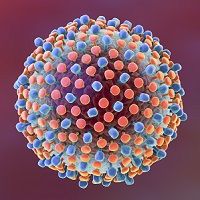News
Article
Hepatitis C Treatment Initiation Low Among Younger, Female Medicaid Enrollees
Author(s):
Approximately 1 in 5 newly diagnosed patients are initiating direct acting antivirals within 6 months, according to Medicaid data review.

Only 1 in 5 US Medicaid enrollees with hepatitis C virus (HCV) received direct acting antiviral (DAA) therapy within 6 months of their first diagnosis, according to new research.1
In retrospective cohort data from a team of US investigators, initiation of HCV treatment among new patients enrolled in Medicaid was notably low—especially among younger patients and those with a history of injection drug use. The findings also showed American Indian or Alaskan Native patients on Medicaid are less likely initiate DAAs in a timely fashion.
Investigators led by Shashi N. Kapadia, MD, of the division of infectious diseases at Weill Cornell Medicine, conducted an analysis to interpret variations in patient demographics based on 6-month DAA initiation following a new HCV diagnosis.
As previously covered, the era of available DAAs for treating HCV since 2014 has been associated with an approximate 95% cure rate in patients who undergo the full dose regimen;2 nonetheless, hepatitis C remains a public health concern with multifactorial challenges. In fact, the incidence of acute HCV cases had actually doubled from 2013 – 2020.
“Whereas HCV was once concentrated in the baby boomer generation (ie, people born between 1945-1965), recent years have seen increasing infections in people younger than 40 years, driven largely by injection drug use,” investigators wrote. “(DAA) treatment rates for young people who inject drugs have been low in smaller-scale studies.”
Kapadia and colleagues stressed the importance of treatment-related disparities in Medicaid when considering that 55% of people who inject drugs are beneficiaries, and Medicaid policies state-to-state may differentiate an individual’s eligibility for DAAs. With the recent release of national Medicaid data, the team assessed disparities in 6-month initiation of treatment for HCV among newly diagnosed patients.
Investigators used national Medicaid claims data across 50 US states, Washington DC, and Puerto Rico from 2017 – 2019 for the retrospective analysis. Eligible patients were aged 18 – 64 years old with a new HCV diagnosis per ICD-10 in 2018.
The final analysis included 87,652 patients enrolled in Medicaid with an HCV diagnosis in 2018. A majority (51%) of patients were male; patients were predominately aged 30 – 49 years old (40%) and non-Hispanic White (46%). Approximately half (49%) had an injection drug use diagnosis.
Just 20% (n = 17,927) patients received HCV treatment within 6 months of their diagnosis. Among the subpopulation, most were aged 50 – 64 years old (53%), male (58%), non-Hispanic White (58%), and without alcohol use disorder (85%) nor cirrhosis (91%).
Investigators observed from their multivariable regression analysis that men were 24% more likely to initiate HCV treatment (odds ratio [OR], 1.24; 95% CI, 1.16 – 1.33). No other demographic components were associated with significantly increased odds of initiating care. Patients aged 18 – 29 years old were 35% less likely (OR, 0.65; 95% CI, 0.50 – 0.85), and those with injection drug use were 16% less likely (OR, 0.84; 95% CI, 0.75 – 0.94). Among races and ethnicities, American Indian or Alaska Native patients (OR, 0.68; 95% CI, 0.55 – 0.84) and Hispanic patients (OR, 0.81; 95% CI, 0.71 – 0.93) were each linked to decreased odds of initiated HCV care.
“In this national study of Medicaid enrollees, we found that the rate of HCV treatment initiation at 6 months was low overall, and significantly lower among individuals from some minoritized racial and ethnic groups, younger patients, females, and patients with IDU and other comorbidities,” investigators wrote. “These findings suggest that substantial public health and policy efforts are needed to encourage HCV treatment and reduce disparities.”
Kapadia and colleagues stressed the impact of significantly disparate odds of HCV treatment initiation among young persons, people who inject drugs and females—the “highest priority groups for HCV elimination.”
“The observed racial and ethnic disparities in treatment initiation suggest that continued tracking of these inequities, and understanding of their mechanisms, are needed,” they concluded. “Further interventions to improve treatment uptake are also needed in the key populations identified here, in order to achieve the treatment rates needed to eliminate HCV.”
References
- Kapadia SN, Zhang H, Gonzalez CJ, et al. Hepatitis C Treatment Initiation Among US Medicaid Enrollees. JAMA Netw Open. 2023;6(8):e2327326. doi:10.1001/jamanetworkopen.2023.27326
- Kunzmann K. People Cured of Hepatitis C Still Face Significant Mortality Risk. HCPLive. Published August 2, 2023. https://www.hcplive.com/view/people-cured-hepatitis-c-still-face-significant-mortality-risk





